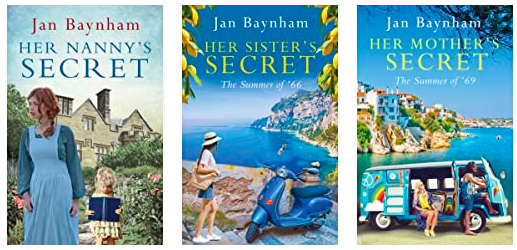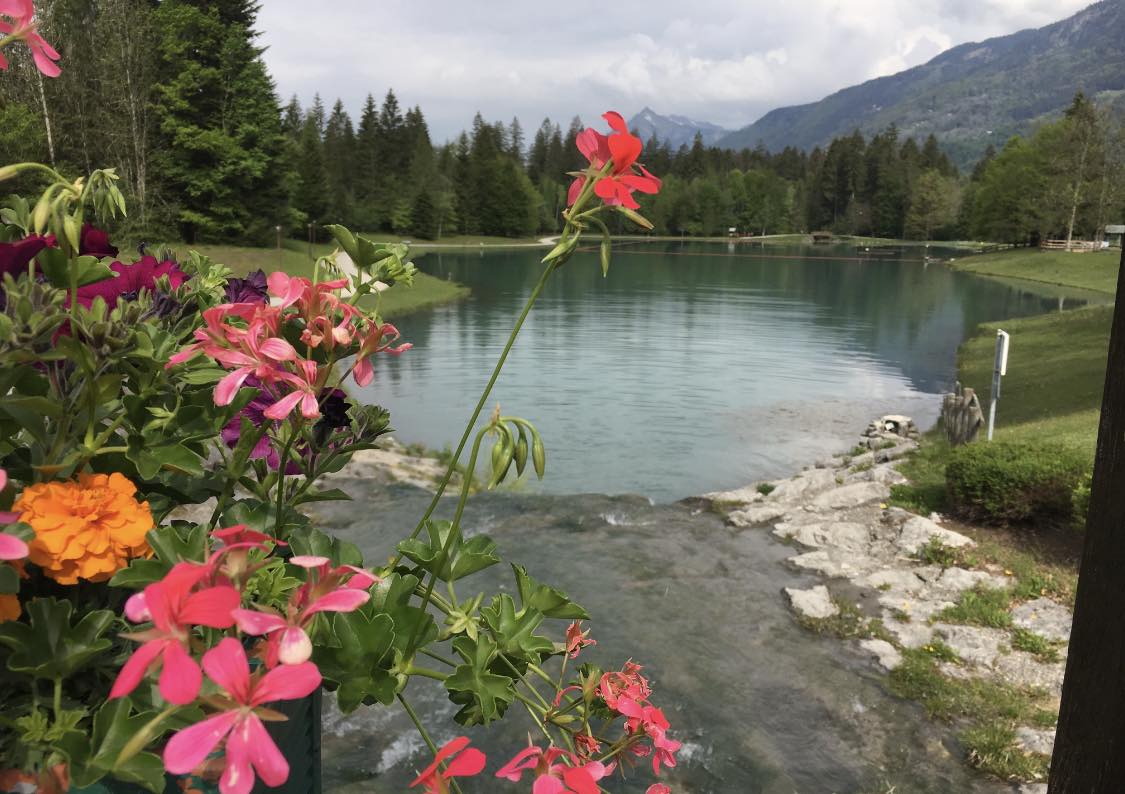Today, I am joined by fellow Choc Lit author Jan Baynham. I love Jan’s novels and the locations her stories take me to, so I am delighted to hear there is another coming soon. In this post, Jan reveals the setting of her forthcoming novel and shares her wonderful research; over to you, Jan…
My novels are all partly set in rural mid-Wales, the area where I was born and brought up, and partly in a contrasting location. Creating a sense of place and an authentic world for my characters to live in is one of the aspects of writing I enjoy. As well as visiting beautiful Radnorshire in my latest novel, readers are transported to the Mediterranean island of Sicily with its stunning scenery, magnificent ecclesiastical buildings, fascinating history and, of course, its wonderful weather. It’s where my character, Carlo, an Italian POW who is interned in a camp in the heart of the Welsh countryside, is from. He’s left behind a secret, and after his death, his daughter travels to Sicily to find out why her father could never return. I’ve tried to capture what it was like for Claudia visiting the island for the first time.
Last summer, my first visit to Sicily proved an excellent way of experiencing what it was like for Claudia. The city of Porto Montebello is fictional but based on the real places I visited, with the presence of Mount Etna in the background. As Claudia walks to find the pensione where she’ll be staying, she’s struck by the city’s straight streets and their tall buildings with shuttered windows and balconies so different from her home village.
The area has stunning architecture and churches everywhere you look. In the novel, Claudia has enrolled on an art history course so I made sure I visited the beautiful duomos in Catania, Taormina and Ortigia where I found examples of the type of paintings she’d be studying.
In the early part of the novel in WW2, Carlo’s mother shelters from the bombing in tunnels under the duomo. A highlight of my research was to visit one such shelter and try to experience how she must have felt night after night. The tour guide, Roberto, was excellent in giving so much information about what life was like down there for the inhabitants of Ortigia.
Another tour I booked in advance was a visit to Casa Cuseni in Taormina. The villa was built at the beginning of the twentieth century by Englishman, Robert Kitson and became an international artistic centre hosting celebrities from the world of literature and painting. This stunning villa is the inspiration when I imagined Casa Cristina in my book. The garden was full of symbolism in its design and the sea views from the villa were amazing.
No visit to Sicily would be complete without a boat trip. After the underground tour of the tunnels, I ended my day with a trip around the island of Ortigia. Our boat man pointed out places of interest, the heart-shaped cave and took us to admire the stalactites, stalagmites and corals in another. This experience inspired how Claudia feels when taken on boat trips.
I hope that being on location in Sicily will have made the setting more real for readers. Visiting the places that Claudia does, eating the same foods and enjoying the hot sunshine as she did all came back to me as I wrote those scenes.
About the book:
With the working title of A Tale of Two Sisters, my fourth novel is due to be published by Choc Lit, an imprint of Joffe Books, in July.
Set in rural mid-Wales and Sicily in different eras, the novel deals with secrets, forbidden love, sibling relationships and forgiveness. There’s an immediate attraction between young widow Sara Lewis, and Carlo Rosso, an Italian POW, even though fraternisation between the POWs and local women is forbidden. At the camp, former artist, Carlo, is tasked with leading a team of prisoners to create a chapel in a disused Nissen hut using scrap and found materials. He busies himself with that intending to forget about Sara. Can he succeed? Prisoners are given more freedom in September 1943 when Italy capitulates and is no longer an enemy of the Allies, but a relationship between Sara and Carlo is still not allowed. After the war, when it’s eventually safe to leave Wales, Carlo stays on as he’s harbouring a secret that means that he cannot return to Sicily. After his death in 1968 and finding letters he’d kept from his mother, Claudia travels to the city where he grew up to find out why. She is shocked by what she finds out but discovers that Carlo has been framed for a crime he didn’t commit. Can she succeed in clearing his name? Who does she get to help her?
This sounds like another great read, Jan. I wish you every success with it and look forward to it landing on my Kindle in July. xx
All of Jan’s novels are available on Amazon. Click here to find out more.
Her Nanny’s Secret is also available at all good bookshops.
About the author:
Fascinated by family secrets and ‘skeletons lurking in cupboards’, Jan Baynham’s dual narrative, dual timeline novels explore how decisions and actions made by family members from one generation impact on the lives of the next.
Setting and a sense of place plays an important part in all of Jan’s stories, and as well as her native mid-Wales, there is always a journey to a contrasting location from the heart of Wales, where my characters are always from.
Originally from mid-Wales, Jan lives in Cardiff with her husband.
Find out more about Jan Baynham and her novels here: Website/Blog | Twitter | Facebook |



















